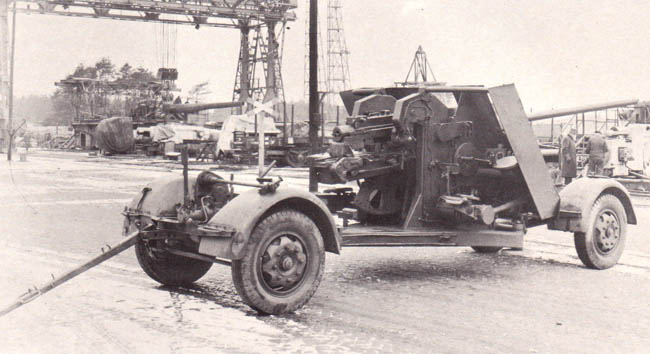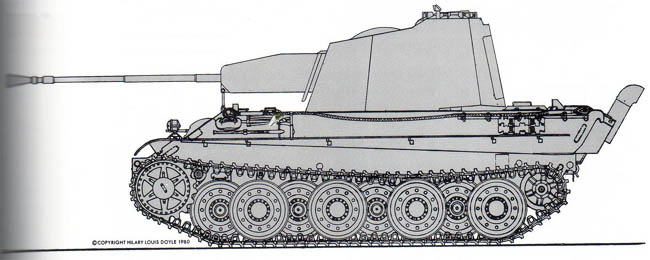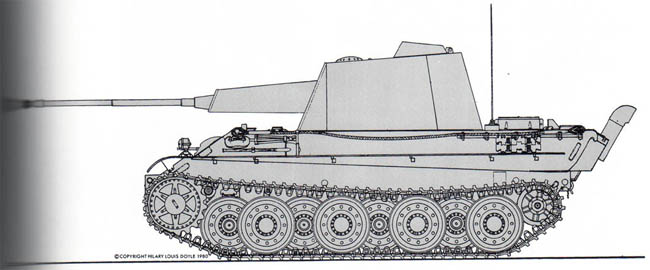hello.
I am collecting pitcures (photographs) about rare panzers, example: panzers with ,holzgas’’ engine and recovery vehicles, beute fahrzeuge. when somebody, can help, plz do it!!(oriwalter@gmail.com)
goodbye
What was with porsche designing all his late tanks with the turret in the front or the rear?
The answer to that is simple, the complicated petrol-electric drive ocuppied nearly halfway of the tank s hull, so there was no room for a mid placed turret.
Note that other designs by Porsche like the Ferdinand /Elefant assault gun share the same characteristic.

Was the petrol-electric drive less reliable compaired to the electric drive in most panzers? You would think there would be less room for ammunition. Am i correct?
The normal panzer ( pz I, II, III, IV, Panther) were not equipped with electric drive, they were driven by normal mechanical transmition. the doktor Porsche had some fascination with this system but I think it would be better suited for locomotives.
Ans yes, it need more room and is heavier ( a lot of copper for the electric motors), The Tiger 1 (P) weight 3 tons more than a normal Tiger 1 (H)
Funny, today there is several cars using this hibryd sistem with no problem…of course mister Porsche had not the advantages of an electronic control in his designs.
Do you think any nations would make any effort to make the tracks stronger? is it really not nessasary to have armour for the tracks?
I think the modern tanks s track are strong enough, they are made of manganese-chromium steel, very resilient materiel.
Panzerfahre aus Pz IV einbau:

Developed in early 1941 by the firms of Klöckner Humboldt Deutz AG, Werk Magirus, Bosanwerft Maybach Zahnradfabik Friedrichshaften, Krupp Gruson and Kässbohrer. The Panzerfahre (Pz.F) was intended to replace the Landwasserschleper (LWS) as a vehicle capable of supply and combat operations on the land and in the water. The first of two units was delivered in May 1942.

The overall shape of the vehicle was that of a large, lightly armored, tracked boat, with a propeller located aft, and the running gear from a modified Panzerkampwagen IV. It was of riveted construction and powered by a Maybach HL 120 engine. The Pz. F had an armored protection of 11-13mm plate and it could tow an amphibious trailer, or work in tandem with another Pz. F and a floating platform to ferry loads up to 24 tons. The design never went into production, as the combat weight of tanks increased drastically with the introduction of the Tiger 1, making the Pz. F obsolete.
Looks like the LVT-1 “ALLIGATOR”
Yea, but without the heavy MGs armament.
[LEFT]Munitionspanzer/Waffenträger VK 501:

This 5 tons vehicle was intended to be a very capable ammunition carrier in order to operate near the enemy lines.
It could carry 2000 kg of bullets or tow the same amout in artillery/mortar pieces. The power was provided by a 6 cilinders Maybach liquid cooled engine. the max speed was stimated in 38 km/h

The vehicle used sloped armor of 20mm at front and 12mm in the sides. The armament was a MG 34 pzlf in a ball mounting at the right of the driver.

Rheinmetall made a single mild steel prototype in 1943 in colaboration with a French manufacturer…
 [/LEFT]
[/LEFT]
Crazyness on the move…Grotte P-1000 on his way to the front passing a french town.



Anti-Aircraft vehicles on Panther chassis. (IV) “Super Cölian” with 5,5 cm Flakzwilling Gerät 58:

The last attemp to arm a Panther ausf G with a medium caliber automatic weapon was the Flakzwilling 5,5 cm or “Super Cölian”
The 55 mm caliber weapon was an adaptation of the “gerat 58” naval weapon. this automatic cannon shot a 2,2 kilogram shell at 140 rpm .
Gerät 58

The muzzle speed was 1000 meters per second and the stimated efective ceiling 4500 meters.
The gun mantlets had to be extremely modified to accept the larger guns.
Detail of the turret for 55 mm flak.


Finally Albert Speer got completely tired of the slow development of the entire Cölian programme, and stated that this new Panzer had no place in the emergency production plan, the Cölian was cancelled definately in January 1945.
For more about the gun:
Hi.
There were two versions of Gerät 58, one designed by Krupp, the other one designed by Rheinmetall-Borsig:

Krupp prototype
Panzerknackers gun is the Rheinmetall prototype VG2 (“Vorführgerät 2”, second trial prototype)
As there were slight differences regarding the recoil and counter-recoil mechanisms. So two different turrets had to be designed:

with Gerät 58 from Krupp

with Gerät 58 from Rheinmetall
Yours
tom! 
Nice profiles thanks, I think Reinhmetall also try to convert this weapon to aircrafts, if the memory dont fails it was the Mk 114 cannon.
Anti-Aircraft vehicles on Panther chassis. (V) 8,8 cm Flak 41/L74 aus Panther Bauteilen
This projekt “with Panther elements” was iniciated in november 1942. Its wasnt a Panther chassis exactly but a more longer one ( 1 meter) and had small changes in final transmition gears.

A thin plate of armor cover the gun mounting the and gunners/loaders, there was no top cover since it was fully exposed to the elements.
The Reinhmetall 8,8 Flak 41 was a extremely powerful weapon. It had an initial speed of 1000 meters per second and a stimated effective ceiling of 10700 meters. To improved the vehicle stability when its engaged targets and low elevation four outriggers were provided. These were deployed by a hidraulic means.
Mockup.

The open turret was fully traversible by hand and its can be elevated from -3 to 86º. The lower elevation allow the use of the Flak 41 as antitank gun.
Mockup at full elevation.

The waffeamnt stop the development of this panzer because they correctly feel that to protect an armored formation a fast fire medium caliber gun plataform was needed, and not a mobile heavy flak since this task could be cover with other means like towed guns and armored trains.
[LEFT]Bergepanzer Tiger(P)

A total of three Bergepanzer Tiger(P) were constructed in September 1943 by Nibelungwerke. The basic chassis and suspension of the Tiger(P) was unchanged, but the engines ( petrol-electric) were mounted in the center and a superstructure was added to the rear (similar to the Ferdinand/Elefant). The only armament was one 7.92mm MG34 mounted in the rear superstructure. No special recovery equipment was added aside from a small derrick crane, rams, and timber beams.[/LEFT]
More images of the Bergetiger Porsche:

Bergetiger - P Panzerjäger Abteilung 653. Ukrania. November 1943
This is a rarity for sure, improvisated artillery bunker build up over Panzer III chasis.





